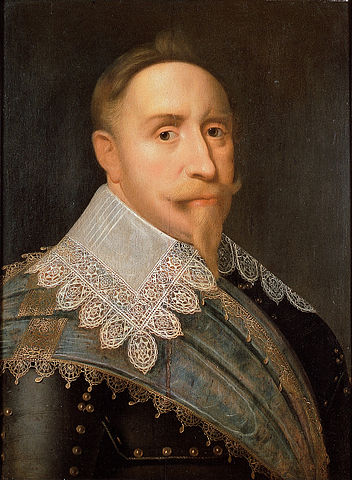Organizations as Systems and Innovation
Blog: Form Follows Function

Over the last year or so, the concept of looking at organizations as systems has been a major theme for me. Enterprises, organizations and their ecosystems (context) are social systems composed of a fractal set of social and software systems. As such, enterprises have an architecture.
Another long-term theme for this site has been my conversation with Greger Wikstrand regarding innovation. This post is the thirty-fifth entry in that series.
So where do these two intersect? And why is there a picture of a Swedish king from four-hundred years ago up there?
Innovation, by its very nature (“…significant positive change”), does not happen in a vacuum. Greger’s last post, “Innovation arenas and outsourcing”, illustrates one aspect of this. Shepherding ideas into innovations is a deliberate activity requiring structural support. Being intentional doesn’t turn bad ideas into innovations, but lack of a system can cause an otherwise good idea to wither on the vine.
Another intersection, the one I’m focusing on here, can be found in the nature of innovation itself. It’s common to think of technological innovation, but innovation can also be found in changes to organizational structure and processes (e.g. Henry Ford and the assembly line). Organization, process, and technology are not only areas for innovation, but when coupled with people, form the primary elements of an enterprise architecture. It should be clear that the more these elements are intentionally coordinated towards a specific goal, the more cohesive the effort should be.
This brings us to Gustavus Adolphus of Sweden. In his twenty years on the throne, he converted Sweden into a major power in Europe. Militarily, he upended the European status quo in a very short time (after intervening in the Thirty Years’ War in 1630, he was killed in battle in 1632) by marshaling organizational, procedural, technological innovations:
The Swedish army stood apart from its’ contemporaries through five characteristics. Its’ soldiers wore uniform and had a nucleus of native Swedes, raised from a surprisingly diplomatic system of conscription, at its’ core. The Swedish regiments were small in comparison to their opponents and were lightly equipped for speed. Each regiment had its’ own light and mobile field artillery guns called ‘leathern guns’ that were easy to handle and could be easily manoeuvred to meet sudden changes on the battlefield. The muskets carried by these soldiers were of a type superior to that in general use and allowed for much faster rates of fire. Swedish cavalry, instead of galloping up to the enemy, discharging their pistols and then turning around and galloping back to reload, ruthlessly charged with close quarter weapons once their initial shot had been expended. By analysing this paradigm it becomes apparent that the army under Gustavus emphasized speed and manoeuvrability above all – this greatly set him apart from his opponents.
By themselves, none of the innovations were original to Gustavus. Combining them together, however, was and European military practice was irrevocably changed. Inflection points can be dependent on multiple technologies catching up with one another (since the future is “…not very evenly distributed”), but in this case the pieces were all in place. The catalyst was someone with the vision to combine them, not random chance.
Emergence will be a factor in any complex system. That being said, the inevitability of those emergent events does not invalidate intentional design and planning. If anything, design and planning is more necessary to deal with the mundane, foreseeable things in order to leave more cognitive capacity to deal with that which can’t be foreseen.
Leave a Comment
You must be logged in to post a comment.








